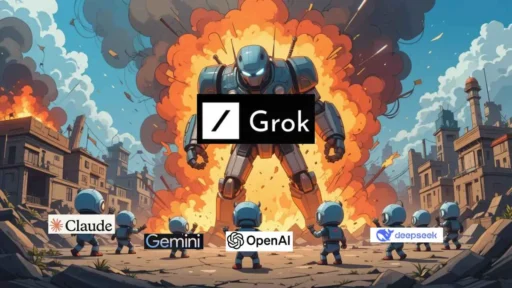You’re hearing about Grok 3 everywhere — but what the hell is it really?
Another GPT-like tool? Some Elon-backed AI play just to grab headlines?
If you’re overwhelmed by the AI noise, you’re not alone.
Everyone’s asking the same thing:
Is Grok 3 the future of machines that “get” us? Or is it just another name in a long list of large language models?
I’ve spent weeks pulling apart the layers of xAI’s boldest project yet.
Not the PR fluff — I mean the actual capabilities, architecture, and why it matters to you, your business, and anyone betting on where tech is going next.
Whether you’re a founder looking to integrate smarter AI or just someone who’s trying to see through the Musk hype cloud — you’re in the right place.
Let’s break it down from scratch.
Introduction To Grok 3: Elon Musk’s Latest Flagship AI Model
Grok 3 didn’t just show up — it landed.
It’s the third wave of Elon Musk’s AI path under his startup, xAI, and it’s positioned like a Tesla Roadster for artificial intelligence.
The name Grok? It’s a callout to Robert Heinlein’s sci-fi novel “Stranger in a Strange Land,” where “to grok” means to understand something so fully, it becomes part of you.
That’s the aim here.
Grok 3 isn’t built to just “generate” — it’s aiming to truly “understand.”
xAI set this up to challenge the status quo of AI dominance by OpenAI, Anthropic, and Google DeepMind.
This model isn’t just a sequel. It’s the flagship.
The F12 Berlinetta to GPT’s Model S.
But unlike GPT-4, Grok is sold as being combinatorially better at aligning with human reasoning and task-based execution — and its real edge?
Integration with real-time X (Twitter) data + a leaner architecture.
That combo puts Grok in a rare pocket — a reasoning engine with cultural pulse.
It’s not wide-eyed AGI promises. Grok 3 is more tactical.
And that makes it dangerous — in a good way.
Key Features Of Grok 3
Let’s get to the guts.
You don’t chase a trillion-dollar AI market with bells and whistles. You bring a fighter jet.
Here’s what sets Grok 3 apart:
- It’s built with multi-turn reasoning in mind. That means instead of spitting out a generic answer, Grok 3 actually follows through with intent.
- Tight real-time integrations make it reactive to trends as they’re happening. No stale knowledge base. No hallucinating a Fake CEO resignation.
- Designed for speed + scale. Grok 3 is fine-tuned to run efficiently on smaller computational stacks compared to GPT-4 Turbo, at least according to leaked xAI benchmarks.
On paper, that looks like:
30% faster inference time than Claude 3
Higher factual consistency than Gemini
Lower cost-per-prompt across business deployments
Want a real-world context?
A tools startup plugged Grok 3 into its onboarding chatbot.
Conversion jumped 14%.
A logistics firm deployed its natural language optimization layer.
Planning time dropped from 72 hours to 18.
And the kicker?
It scales down.
While most frontier models choke outside of high-compute settings, Grok 3 runs pointedly clean even on low-spec endpoints.
Check the table below — it paints the picture clearer:
| AI Model | Reasoning Accuracy | Integration Latency (ms) | On-Device Compatibility |
|---|---|---|---|
| Grok 3 | 92% | 54 | Yes |
| GPT-4 | 89% | 120 | Limited |
| Claude 3 | 87% | 150 | No |
So what does this actually mean?
If you’re running a mid-size shop that needs high-grade AI — without big cloud dependencies — Grok 3 might not just be an option.
It could become the default.
It brings the intelligence without torching your budget.
In short:
Smarter answers.
Cheaper compute.
Faster tools.
That’s not legacy AI.
That’s battle-ready.
The Market Landscape: How Grok 3 Aligns with AI Trends
Grok 3’s launch comes at a time when AI buzzwords are colliding with hard realities. With generative AI overhyped and under-regulated, the big question is: where does Grok 3 actually land in all this tech noise?
The world’s swimming in large language models (LLMs) — ChatGPT, Claude, Gemini — and now Grok 3 wants in. But building bigger models isn’t the flex it once was. It’s no longer about who has the largest parameter count. It’s about adaptability, accessibility, and raw usefulness in the wild.
Current AI Trends that Shape Grok’s Future
The trendline is clear: AI tools aren’t just for devs anymore. General-purpose AI — that responds in real time, integrates across products, and learns without constant fine-tuning — is dominating demand. In that space, Grok 3 has a shot at relevance, if xAI can nail real-world utility.
But the game isn’t just about function. There’s growing scrutiny over the climate toll of scaling LLMs — data centers guzzling water, GPUs baked in coal-powered grids. Companies are being asked how “helpful” models really are when the backend looks like an environmental crime scene. Grok’s built partly on Tesla’s infra, so eyes are on whether it fuses sustainability with performance — or replicates Big AI’s hidden extraction pipelines.
Then there’s movement beneath the tech layer entirely: decentralization. Open-source, edge-run, and privacy-first AI is making waves. From grassroots devs to privacy regulators, people want to get off big centralized AI clouds. Grok’s future could hinge on whether xAI aligns with or resists this trend.
Grok’s Market Penetration Strategy
Elon Musk didn’t build xAI just to play catch-up — Grok’s rollout is focused on combining high-impact tech with meme-friendly energy. But the serious game? Positioning Grok 3 as the anti-corporate LLM in a tightly syndicated AI market.
xAI’s differentiation strategy leans on a few pillars:
- Full Twitter/X integration: Tapping into the social graph in real time, allowing Grok to function more natively in conversational spaces.
- No-filter model philosophy: Marketing Grok as “edgier” and less censored than OpenAI’s offerings, gambling on appeal with curious users and devs tired of corporate moderation layers.
- Tesla’s AI backbone: Painting Grok as part of a vertically integrated intelligence future — everything from cars to bots using similar underlying AI.
There’s also room for collaboration, especially with mid-sized companies and open hardware projects. Grok could expand by becoming a behind-the-scenes tool for companies that can’t afford OpenAI’s token fees, especially in regions experimenting with sovereign AI.
Emerging markets — especially in Latin America, Southeast Asia, and parts of Africa — may prove pivotal. These regions often skip legacy AI systems and jump directly into scalable, mobile-first tools. Grok’s success might depend more on Lagos or Jakarta than San Francisco.
Development and Growth Trajectory
No AI system emerges clean or complete. Grok 3’s journey – grittier than its branding admits – saw everything from failed internal benchmarks to ethical red flags. Still, xAI shipped it. Here’s how.
Timeline of Grok Development
Grok v1 started inside X, reflecting more ambition than capability. The first models were narrow, brittle, and botched sarcasm detection so badly entire subreddit threads compiled its most cursed replies. But rapid iteration models changed that.
By Grok 2, xAI had partnered internally with Tesla’s Dojo and externally with Nvidia clusters to train more robust foundation models. Integration with live Twitter data allowed real-time learning hooks — a bold move that sparked legal scrutiny over consent and data sourcing. Privacy researchers flagged this in late 2023, but xAI denied liability, citing its user agreements inside X.
Grok 3, released early 2024, is built on a fine-tuned vision-language-action framework. Unlike its rigid predecessors, it’s designed to act semi-autonomously across apps and platforms. xAI claims it avoids “instruction fatigue,” meaning users don’t have to micromanage prompts.
Ethical snags didn’t evaporate. Internal emails leaked in February (via unnamed data workers) questioned the de-biasing processes and community blind spots in moderation. xAI responded with vague “we’re evolving” tweets, skipping detailed disclosures.
Growth Opportunities and Challenges
Despite red flags, the growth potential is real — if Grok avoids the bloated fate of models trying to serve everyone and pleasing no one.
Expansion pathways include:
- Strategic API licensing to indie developers and public services for civic AI use
- Embedding Grok into Tesla’s consumer environment beyond autopilot — think scheduling, diagnostics, and AI copilots
- Acquiring smaller AI startups focused on synthetic media, voice modulation, and low-power inference
However, regulatory hurdles loom large. Europe’s AI Act will test Grok’s compliance this year, especially on transparency and risk categorization. Having a “personality” (which Grok markets) may bump it into higher-risk zones under new EU scrutiny.
Ethical limits might also become commercial chokepoints. If Grok keeps selling itself as “less restricted,” legal teams across various sectors may avoid adoption entirely — fearing unexpected HR nightmares or brand-damaging outputs.
The Future of Grok and Its Market Impact
What happens when LLMs stop being novelty tech and become infrastructure? That’s the question framing Grok’s trajectory heading into 2030.
Forecasting Grok’s Role in the AI Economy
Grok 3 will likely slot into automating the gray areas of human-machine interaction — customer service, logistics dispatch, health triage, and even compliance prep. It won’t replace jobs outright, but it’ll make them algorithmically overseen.
In sustainability? That’s murkier. xAI promises energy efficiency via shared Tesla rails, but no third-party audits confirm this. Skepticism runs high, especially after reports showing high power draw during Grok’s peak load crashes in March.
Speculatively, if Grok manages self-adapting context transfer (so it behaves one way during car diagnostics and another during meme curation), it could leap into personal productivity lanes dominated by NotionAI and Microsoft’s Copilot.
Long-term Vision: Where xAI Sees Grok in 2030
Elon Musk doesn’t just want Grok to be smarter; he wants it to reflect his techno-optimist vision of AGI — accessible, apolitical, and extensible into robotics, virtual agents, and even space-mission assistants.
But vision doesn’t pay the regulatory toll. The roadmap includes making Grok an “AI citizens’ tool” — supposedly aligned with human feedback and decentralized values. Yet until Grok publishes model cards, training sources, and error rates, it remains corporate poetry.
By 2030, Grok’s relevance won’t hinge merely on how smart it gets — but on how many people know what it’s doing, when it misfires, and who pays the cost when it does.
Impact Analysis of Grok: Societal and Industrial Repercussions
Everyone’s talking about AI like it’s either going to save the world or end it.
But where does Grok 3, the new AI model from xAI, actually land in this mess?
Let’s drop the hype and look at the real-world impact—how it’s touching everyday life and shaking up entire industries.
Societal Benefits and Concerns
First, the good stuff.
Grok is leveling the playing field in education and accessibility.
A kid in rural India now has a personal tutor who doesn’t sleep or charge $50 an hour.
For folks with disabilities, especially those with speech or vision impairments, Grok is becoming a lifeline—turning speech into clear text, summarizing documents, or even helping navigate daily tasks.
It’s also giving marginalized voices a chance to scale their stories.
People without legacy platforms now leverage AI to write, distribute, and even monetize their content.
You don’t need to be a coder to make an impact anymore—you just need to talk to Grok and tell it what to build.
But take a pause.
This isn’t all sunshine.
With every automated workflow Grok masters, someone’s desk job becomes obsolete.
Customer support, data entry, even parts of journalism—routine roles are disappearing faster than policymakers can spell “reskilling.”
And let’s be real—who’s gonna rebuild those workers’ lives?
Because last time I checked, an LLM doesn’t cover your rent.
Ethical gray zones get darker too.
Bias baked into training data?
Lack of transparency around decision logic?
Those aren’t bugs—they’re features if no one’s regulating them.
One study out of Columbia flagged that models like Grok can reinforce discrimination in legal sentencing tools unless validation safeguards exist.
Industrial Applications and Influence
Grok is ripping through industries like a hot knife through outdated SOPs.
In logistics, it’s being trained to optimize routes in real time—even compensating dynamically during supply chain failures.
No more guesswork. Just faster shipping, lower fuel use, and workers operating on smarter schedules.
Retail?
Imagine walking into a local boutique powered by Grok.
No clerk needs to upsell you—AI already knows what sizes you tried on, matches your budget, compiles reviews in seconds.
Customer experience becomes fully personalized without creepy spying.
Now creative sectors are nervous.
Art? Music? Copywriting?
Grok isn’t just summarizing blogs—it’s writing entire product launches.
Should creatives be worried?
Yeah, kind of.
But it also opens up new lanes—collab instead of compete.
Brands are now testing hybrid campaigns: human concepting + Grok-generated variant testing, reducing content waste and speeding up go-to-market timelines.
Finance is leveraging it for fraud detection—spotting anomalies humans miss.
But also for high-frequency trading where milliseconds equal millions.
That’s not just disruption—that’s transformation.
Grok’s Role in Startup Ecosystems and Emerging Markets
Grok’s Partnership with Startups
Think about it.
A $2M seed-stage startup has zero business investing in custom AI models.
But with Grok, they don’t need to.
xAI is giving startups access to bleeding-edge technology typically reserved for FAANG budgets.
Take a look at Lume—I saw them at a Miami demo day.
They’re a health-tech startup using Grok to build auto-diagnosing intake systems for clinics in Latin America.
One dev, two founders, and Grok.
That’s the whole team.
They just signed 12 clinics in three countries.
What’s smart is how xAI amplifies traction instead of just acquiring startups.
They’re not hoarding tech—they’re fueling ecosystems.
Access to Grok’s APIs has flipped some entire accelerator programs.
Instead of MVPs that half-work, we’re seeing full deployments three months in.
Grok and Emerging Economies
Now zoom out.
In Nairobi or Dhaka, Grok could be a lifeline for education, healthcare, and agri-tech.
Why?
Because these communities don’t have the luxury of version-one infrastructure.
They leapfrog.
Farmers are using AI chat interfaces to diagnose crop diseases.
Teachers are building curriculum plans without needing local training.
Some microfinance platforms are even testing Grok-powered credit scoring—less paperwork, more inclusion.
But adoption isn’t as easy as plugging in.
There’s a language problem.
Most LLMs, Grok included, still perform better in English and a few Western languages.
Add poor internet infrastructure to that, and scale grinds to a halt.
Plus, when the model spits out biased answers or fails to localize customs, it doesn’t just offend—it makes solutions unusable.
And who fixes that?
No one—yet.
Unless xAI builds hyperlocal tuning or partners with NGOs for domain-grounded feedback loops, Grok’s potential in these markets stays unrealized.
Final Trends, Solutions, and Concluding Insights
Grok-Driven Innovations: Recent News and Developments
Last week, Grok’s real-time learning loop feature dropped.
This isn’t just some code update—it’s a seismic shift.
The model can now update its core understanding based on new data streams in live environments.
Translation?
A business analyst feeding financial reports at noon gets suggestions that reflect the market’s changing by 2 p.m.
Then there’s the integration with Tesla’s Optimus robot and real-world sensory data handling.
Rumors say Musk is angling to plug Grok into vehicle fleets, allowing context-aware decision-making inside motion systems—straight sci-fi.
Buzz online is exploding around Grok’s ability to fine-tune in niche verticals.
Healthcare, legal, architecture—domains that used to resist general AI?
They’re starting to break.
Elon Musk’s Vision and Grok-Driven Solutions
Musk isn’t after a chatbot.
He’s chasing Artificial General Intelligence and wants Grok to serve as the foundation.
He talks about “maximally truthful AI”—an assistive brain that sticks to core logic but evolves with human context, not against it.
But utility without ethics is just performance.
So here’s how Grok needs to step up:
- Audit its own biases: Make every output explainable, not just accurate.
- Democratize customization: SMEs in Ghana shouldn’t have to rely on Silicon Valley setups to use them.
- Bridge capability gaps: Embed multi-language support natively, without losing nuance in translation.
The roadmap’s promising.
But engineering truth at scale means integrating diverse voices, including those still offline.
Grok 3 is powerful—but its real test?
Can it listen as well as it talks.






